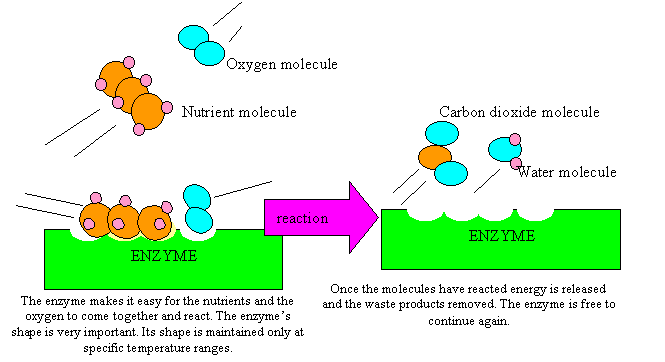Since the insect is cold blooded, in other words it depends
on the environment to increase its body temperature, it can only function
at optimum levels when the conditions are suitable. During winter the
insects are not active in great numbers.
The insect, like other creatures, burns food with oxygen to create energy
necessary to sustain life. This process is known as metabolism.
The rate at which the insect produces energy, to some extent, depends
on the speed with which oxygen and food travel around the body to where
they are needed and waste material removed.
A rise in temperature is accompanied by an increase in the:
- rate of chemical reactions
- solubility of solids in liquids
- speed of movement of all molecules, be they nutrient or waste molecules.
All living creatures control the rate at which they burn food to release
energy. This is called the metabolic rate. Control of chemical reactions
is done through special molecules(chemicals) called enzymes.
Enzymes are natural catalysts that accelerate certain reactions. If an
insect wants more energy it must not only provide the nutrients and oxygen
but must also supply the right enzyme to make the burning proceed quickly.
Enzymes are chemicals that only function well at certain temperatures
and this is another reason why maintaining temperature is so important.
Flying is an exhaustive task which requires an enormous amount of energy.
During egg laying the butterfly must hover over leaves for lengths of
time. Only during summer is there enough heat around to allow the insect
to function at maximum capacity.

How does the butterfly cope with the winter months? Compare this with
other creatures.
Look at the diagram above and explain how an enzyme works.